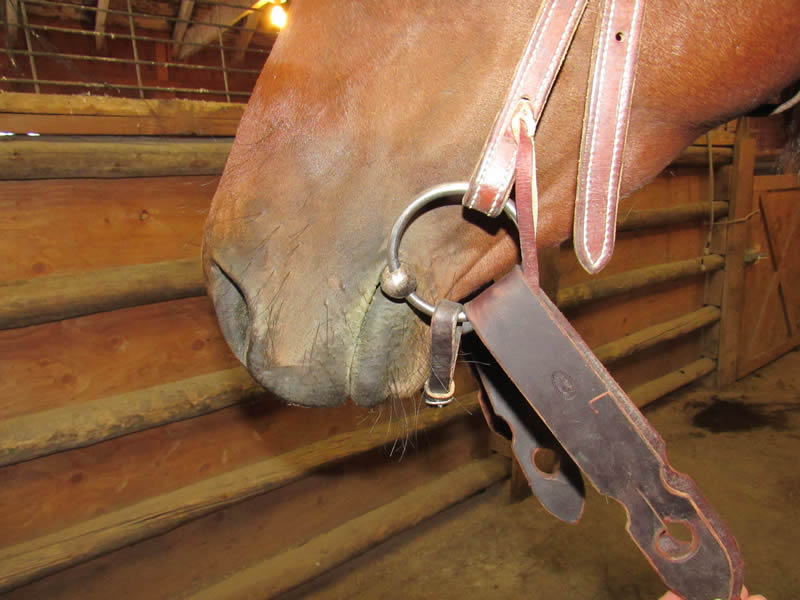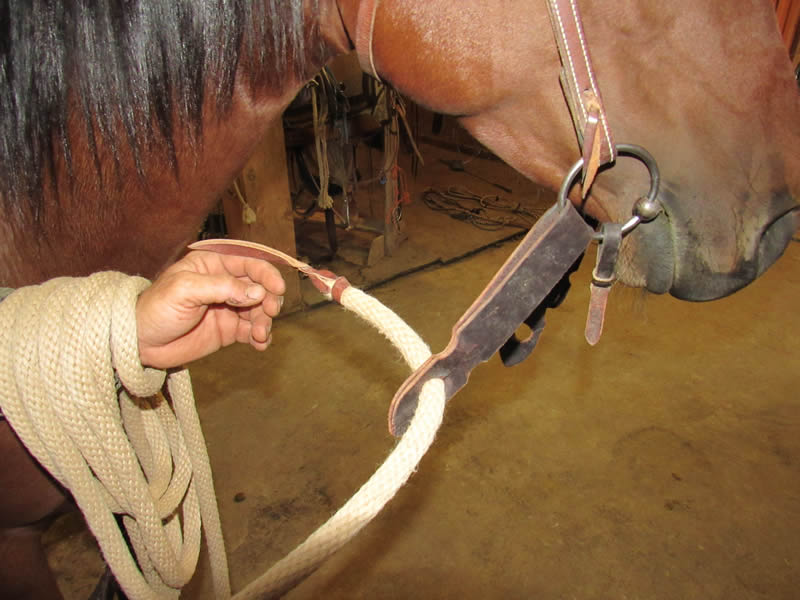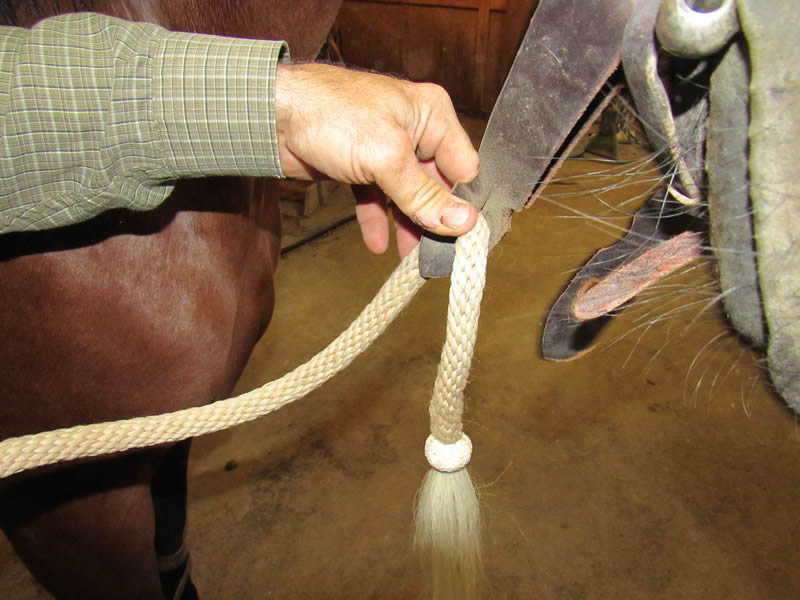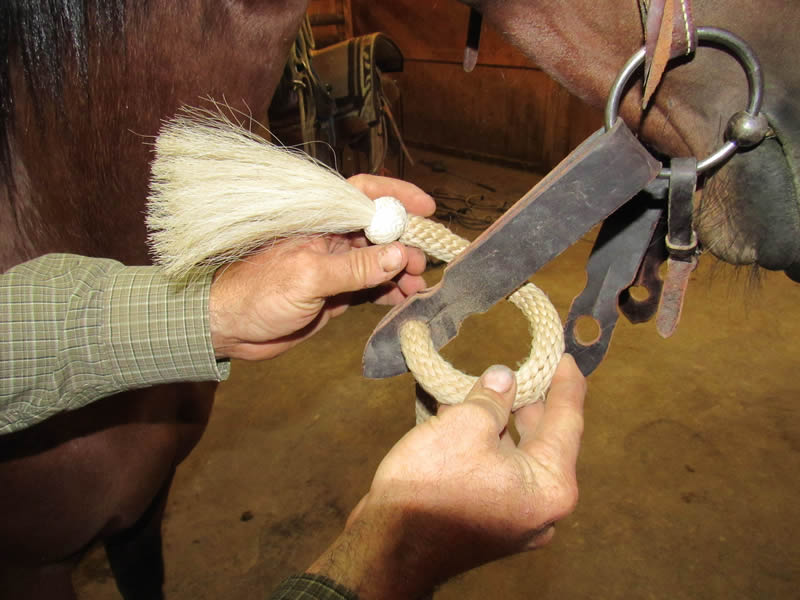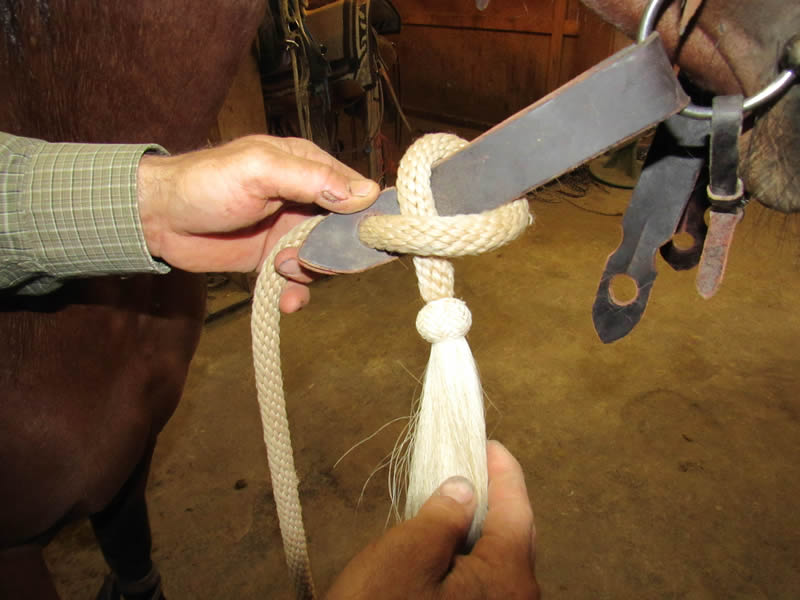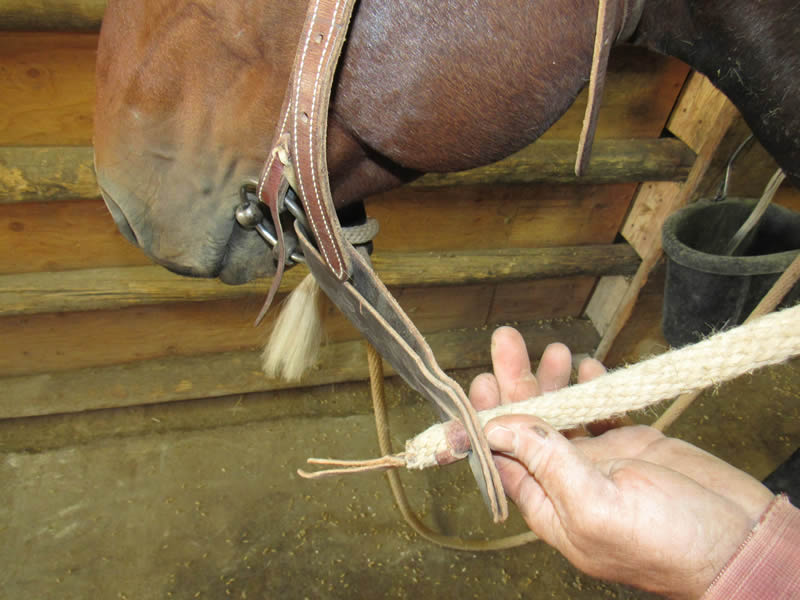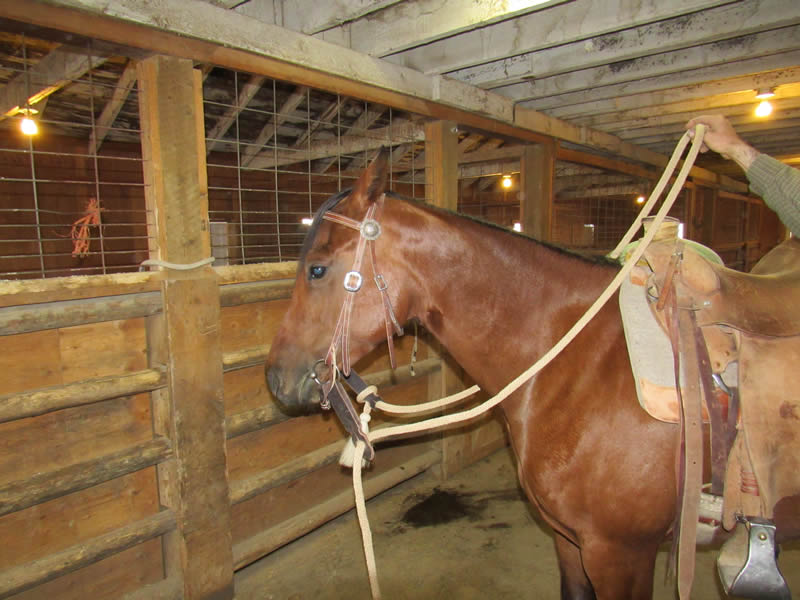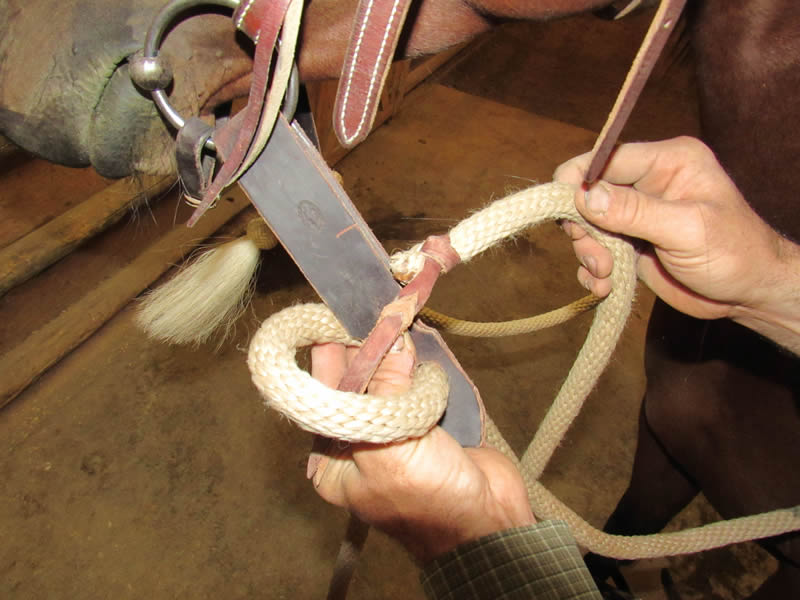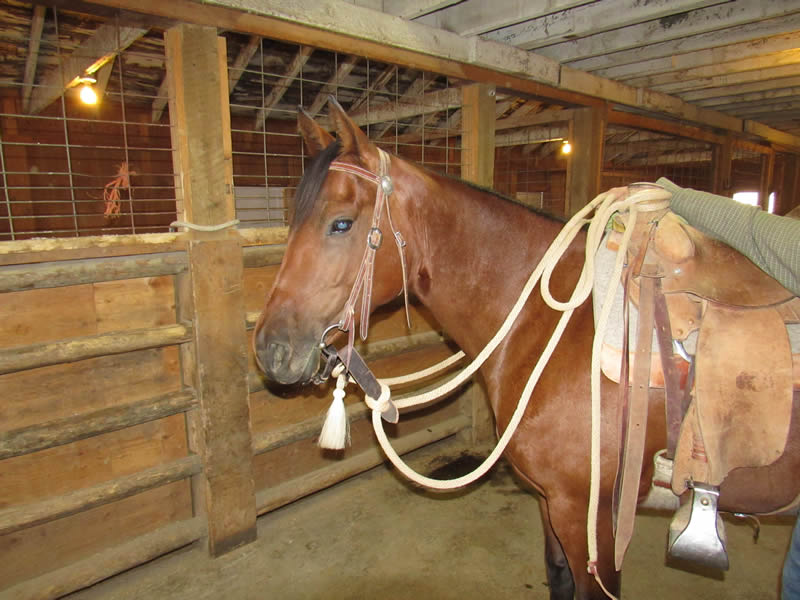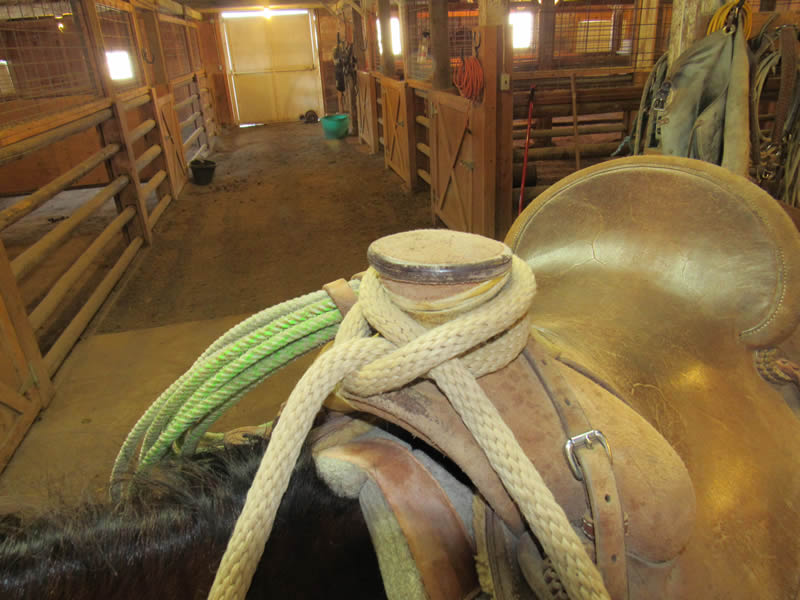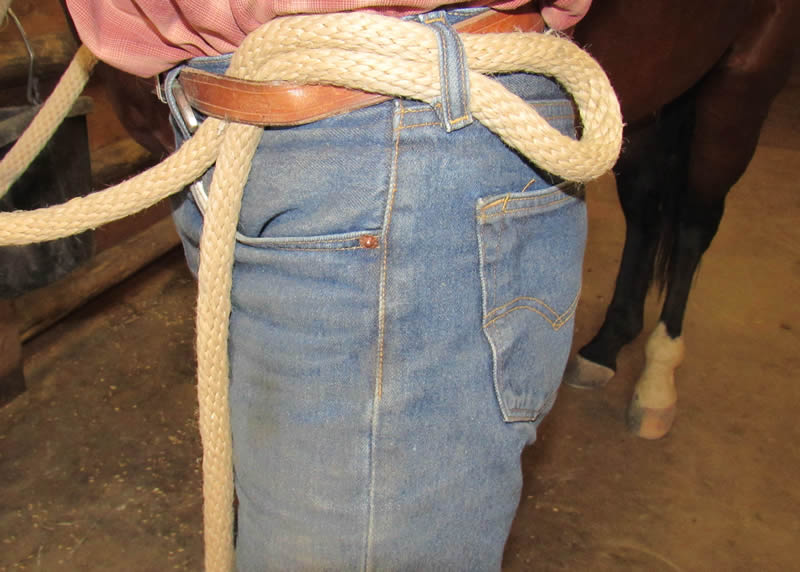Look in any trainer’s tack room or working cowboy’s warbag, and you are virtually guaranteed to find at least one snaffle bit. In its various forms, the snaffle is common to nearly every riding discipline, and has been a fundamental horseman’s tool for literally thousands of years.
The function of a snaffle bit is simple: to apply direct pressure to either side of a horse’s mouth as a cue for movement in the same direction. This straightforward communication is ideal for laying the foundation in young horses and for revisiting the basics and refining maneuvers in older horses.
Without the leverage and additional pressure of a shanked bit, the amount of pressure from the rider’s hands translates directly to how much the horse feels in his mouth. The horse feels the snaffle at the corners and bars of his mouth, and on his tongue and palette. The bars are the most sensitive of these, and are thus most subject to damage by a heavy handed rider.
Snaffle bits come in a wide variety of styles, with different sizes and shapes of rings and mouthpieces. Probably the most common in the cowboy and cowhorse worlds are O-rings, which can be loose or fixed, but D-rings and eggbutts are other options for a basic snaffle.
Depending mostly on the physical structure of their mouths, horses will have preferences for different bits. For example, a straight mouthpiece will put more pressure on the tongue, while curved mouthpieces will put more pressure on the corners of the mouth. Thick mouthpieces are the most gentle, while thin mouthpieces can be more severe–of course any bit is just an extension of the rider’s hands. Most young horses are started in a snaffle of some kind, with thicker, gentler mouthpieces being largely preferred for a colt’s first experiences. As training progresses and the horse becomes increasingly responsive, smaller diameter mouthpieces are often utilized.
Loose-ring snaffles generally have more play and are more forgiving for early training sessions, while fixed ring snaffles, D-rings, and eggbutts generally give a more direct signal and encourage a quicker response. The D-ring and eggbutt’s flat surfaces against the horse’s face won’t allow the horse to be pinched, as can sometimes happen with a loose O-ring, and also emphasize the signal because of the increased surface area that’s in contact with the horse.
The type of metal can also make a big difference in how a horse responds. Steel bits are sometimes called “sweet iron,” and they have a taste that many horses like, even as the metal rusts. While stainless steel keeps its shiny look, it lacks the taste. Copper promotes salivation, which helps keep the horse’s mouth moist and responsive. Many snaffle mouthpieces are made with copper inlays in the steel mouthpiece to offer the best of both.
The combined weight of the snaffle and reins also work to help create feel; ideally, the heavier they are, the lighter the rider’s cue needs to be. Traditionally, snaffle bit reins are either split reins or a mecate, both of which can be made in a variety of widths and thicknesses that affect weight accordingly. Harness leather is considered by many to be the best for split reins, which usually are 8 feet long. They can be made of a single ply of leather, but layers of leather stitched together work especially well with snaffle bits to help create the weight and feel that are universally sought by horsemen.
Mecates are usually 22 feet long, and can be made with a variety of materials from horsehair to nylon. The length allows for a rein loop and a “get-down,” making the mecate set up ideal for the working cowboy who needs to dismount to open a gate and lead a horse through—or perhaps to keep a hold of the broncy cavvy horse that has bucked him off in big country. The get-down has saved many a cowboy from a long walk home!
A mecate is always attached to the snaffle bit with slobber straps, which can be as utilitarian or ornate as desired. Slobber straps serve several purposes beyond being possibly decorative. They provide additional weight and feel to the reins, which is vital especially when using a light, small diameter mecate, they help distribute the pressure on the reins, and they keep a nice mecate from getting wet when a horse gets a drink after a long circle.
When setting up a mecate outfit, make sure that the chin strap is between where the mouthpiece joins the rings and the slobber straps, as shown. The curb strap on a snaffle bit outfit should never be tight; its main purpose is to keep the bit from being pulled sideways through the horse’s mouth.

